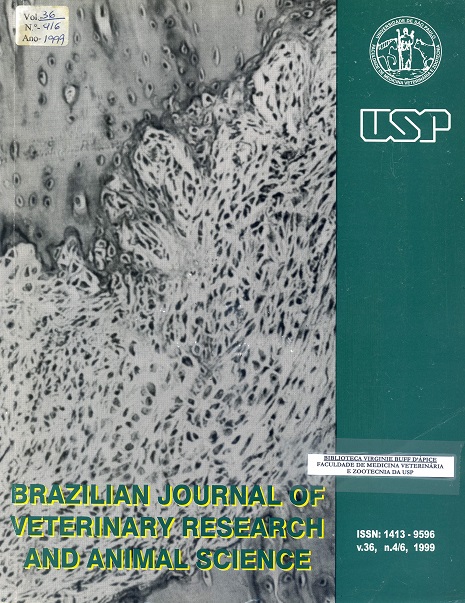Estrus synchronization in Nelore females (Bos taurus indicus) using melengestrol acetate with or without prostaglandin F2alpha
DOI:
https://doi.org/10.1590/S1413-95961999000500010Keywords:
Estrus, Synchronization, Nclore, Melengestrol, ProstaglandinAbstract
This study was conducted to determine the efficacy of melengestrol acetate (MGA) with or without prostaglandin F2alpha (PG) in synchronizing estrus in Zebu females (Nelore - Bos taurus indicus). Five hundred and forty-eight cows and heifers were allotted to one of three groups by age, body condition score, sex of calf and days postpartum. Group 1 served as a nonsynchronized control (n = 119) and cows were fed a protein mineral salt carrier without MGA, animals in group 2 (n = 219) were fed 0.5 mg MGA/head/day, for 14 days, and group 3 (n = 210) animals were fed 0.5 mg MGA/head/day for 14 days and were injected i.m. with 25 mg PG, 17 days after the last day of MGA feeding. Cows and heifers were artificially inseminated 12 h after the detection of estrus. The MGA/PG and MGA systems induced synchronized estrus and enabled more cows to become pregnant early in the breeding season compared with nonsynchronized control cows that were inseminated during spontaneous estrus (group 1 = 17.65% vs group 2 = 27.40%; group 3 = 31.90%). In this respect, PG injection caused a larger number of 5 day estrus responses in the MGA/PG group, greatly facilitating the use of AI.Downloads
Download data is not yet available.
Downloads
Published
1999-01-01
Issue
Section
VETERINARY MEDICINE
License
The journal content is authorized under the Creative Commons BY-NC-SA license (summary of the license: https://
How to Cite
1.
Mizuta K, Madureira EH. Estrus synchronization in Nelore females (Bos taurus indicus) using melengestrol acetate with or without prostaglandin F2alpha. Braz. J. Vet. Res. Anim. Sci. [Internet]. 1999 Jan. 1 [cited 2026 Jan. 16];36(5):273-80. Available from: https://revistas.usp.br/bjvras/article/view/5741





